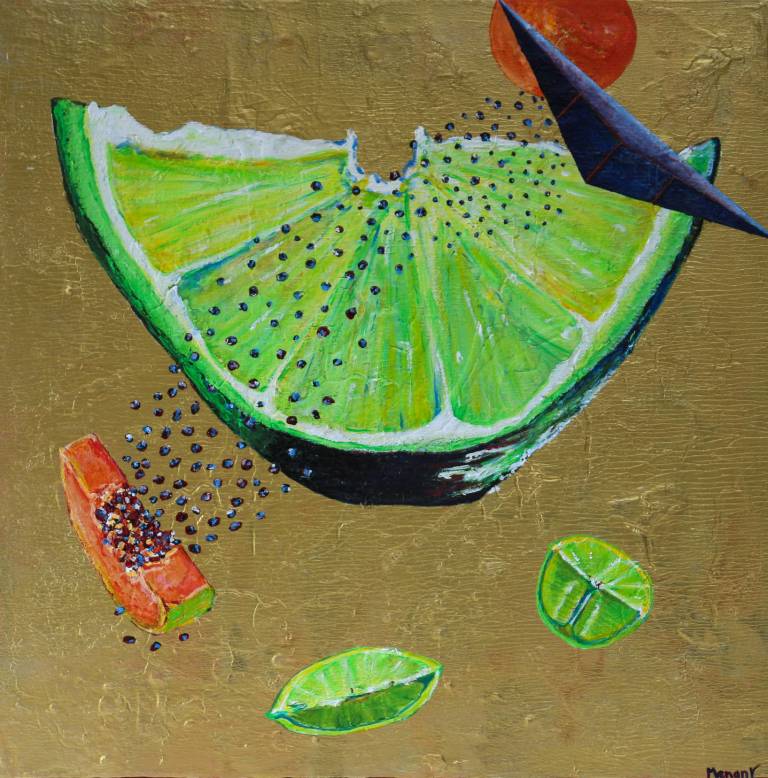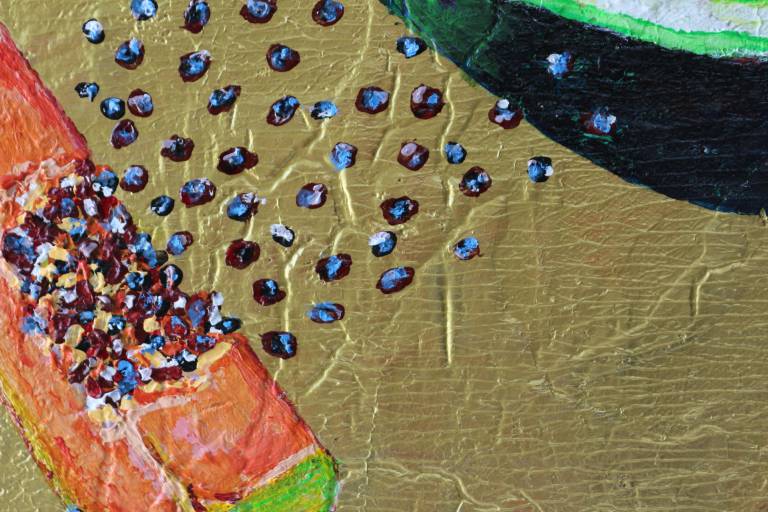LIME
- Fruit Routes
- Acrylic and varnish on canvas
- 60 x 60 x 4 cm (23.6 x 23.6 x 1.5 in)
- Ref: 646629/321
£ 1,200.00
Evidence from DNA tells us that all citrus fruits trace their roots to the foothills of the Himalayas, whether that is sweet oranges or sharp lemons. A fossil citrus leaf found in south-west China dating to about eight million years ago supports this theory.
Climate change millions of years ago created drier weather and weaker monsoon rain, enabling citrus trees to spread throughout south-east Asia.
They are now the most widely grown fruit trees in the world but today’s specimens are the result of millennia of evolution coupled with thousands of years of plant breeding.
German explorer and naturalist Alexandre Humboldt, hailed as the ‘father of ecology’, and French botanist Aimé Bonpland travelled widely in South America between 1799 and 1804. They collected the seeds of 30-metre high lemon trees in the Amazon which were planted and studied at botanical gardens in Paris, London and Madrid.
In ancient cultures, the colour yellow symbolised the divine power of the sun. Van Gogh introduced yellow to his paintings when he arrived in Provence; he painted with warm yellows which morphed into a greener shade with discolouration and age.
Limes are not green lemons; they are a different fruit. Originating in India, it was Arab traders who called them limah.
The crusaders brought them to Europe and they were introduced by the Spaniards to South America via the West Indies during Christopher Columbus’s second voyage (1493 – 1496).
Limes travelled well: in the navy, it was initially guarded as a military secret that eating them combatted scurvy. This is why British sailors were nicknamed ‘Limey’ in the late 19th century by Americans.



